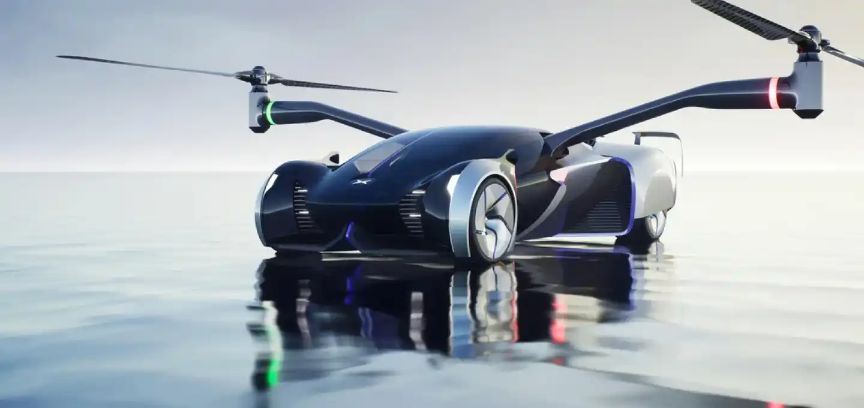Urban Mobility Revolution: How Flying Cars Will Change Cities
4 min read
23 Jun 2024
Imagine a city where traffic jams are a thing of the past, and your daily commute takes minutes instead of hours. This vision of urban mobility is on the verge of becoming a reality, thanks to the development of flying cars. This article explores the urban mobility revolution fueled by flying cars and how they have the potential to reshape our cities, creating a new era of transportation innovation and transforming urban living in unprecedented ways.
Rising Above Traffic Gridlock: A Skyward Solution
One of the most compelling promises of flying cars is their ability to rise above the gridlock that plagues urban roadways. With the freedom to travel in three dimensions, commuters can bypass congested streets, drastically reducing commute times and eliminating the stress of being stuck in traffic. This aerial solution not only saves time but also enhances the quality of urban life, offering a glimpse into a future where the skies are the new highways.

Urban Airports and Skyports: Hubs of Connectivity
To accommodate flying cars, urban areas are envisioning the creation of urban airports and skyports. These hubs would serve as takeoff and landing points, integrating flying cars seamlessly into the existing transportation network. Skyports on rooftops and in strategic locations could become as common as today's bus stops, offering a network of aerial pathways that connect neighborhoods and business districts, revolutionizing urban connectivity.
Reducing Urban Congestion: A Breath of Fresh Air
Flying cars have the potential to significantly reduce urban congestion, alleviating the daily frustrations of commuters. As a result, our cities could see less wear and tear on road infrastructure, lower emissions due to reduced traffic idling, and improved overall traffic flow. This reduction in congestion benefits both the environment and the quality of urban life, paving the way for cleaner and more efficient urban centers.
Shortening Commute Times: Urban Accessibility Redefined
Shortening commute times is a game-changer for urban dwellers seeking a seamless and time-efficient lifestyle. Imagine living in the suburbs but being able to reach your downtown office in a matter of minutes. Flying cars make this a reality, effectively shrinking the perceived size of a city and enhancing its accessibility. This transformation redefines how we perceive distance and accessibility within urban environments, making every corner of the city easily reachable.
The Role of Autonomous Flight: A Safe Journey Ahead
Autonomous flight is a key element of the urban mobility revolution. Flying cars equipped with advanced autonomous systems can safely navigate complex urban airspace, reducing the need for human piloting skills. Passengers can relax and enjoy the journey while the vehicle handles the intricacies of takeoff, landing, and navigation. This level of automation ensures safe and user-friendly urban travel, making flying cars accessible to a broader audience.
Challenges and Safety: Aerial Responsibility
Despite their promise, flying cars face significant challenges, particularly regarding safety and regulation. Air traffic management systems must be overhauled to accommodate a new dimension of transportation. Additionally, ensuring that flying cars are safe for both passengers and those on the ground is paramount. A meticulous balance between innovation and safety is essential to create a responsible and secure urban airspace.
Environmental Considerations: Balancing Convenience and Responsibility
The environmental impact of flying cars is another important consideration. While electric propulsion can reduce emissions compared to traditional combustion engines, the energy sources for these vehicles must be sustainable. Balancing the convenience of flying cars with environmental responsibility is crucial. Innovations in sustainable aviation technologies, from advanced battery systems to eco-friendly materials, play a pivotal role in shaping a greener and more responsible future of urban mobility.
Changing Urban Design: From Roads to Green Spaces
The introduction of flying cars will likely influence urban design. With reduced dependence on roadways, cities may repurpose parking lots and congested streets into green spaces, pedestrian zones, or new developments. This could lead to more livable and environmentally friendly urban environments. The cityscape will evolve, creating opportunities for urban planners and architects to reimagine how cities are built and experienced.
Conclusion: A New Era of Urban Mobility Beckons
The development of flying cars represents a significant shift in urban mobility. While challenges remain, the potential benefits are too compelling to ignore. A future where flying cars seamlessly coexist with traditional transportation is on the horizon, promising shorter commutes, reduced congestion, and a more accessible and sustainable urban lifestyle. The urban mobility revolution is about to take flight, and our cities will never be the same, heralding a new era where the sky becomes an integral part of our daily commute and urban living.


